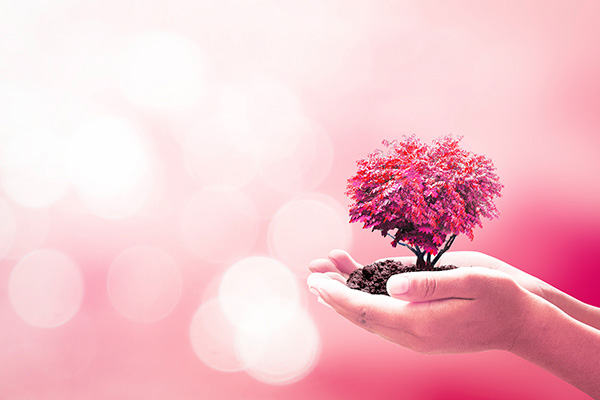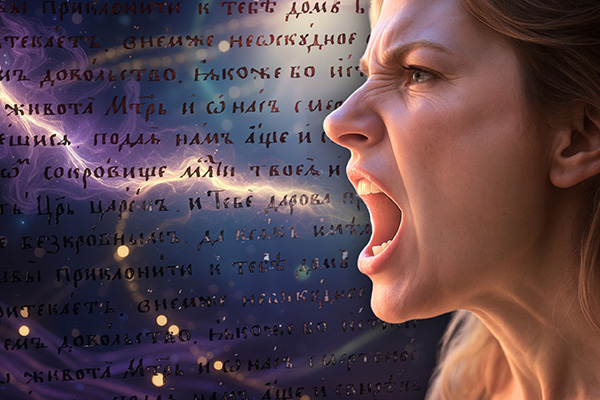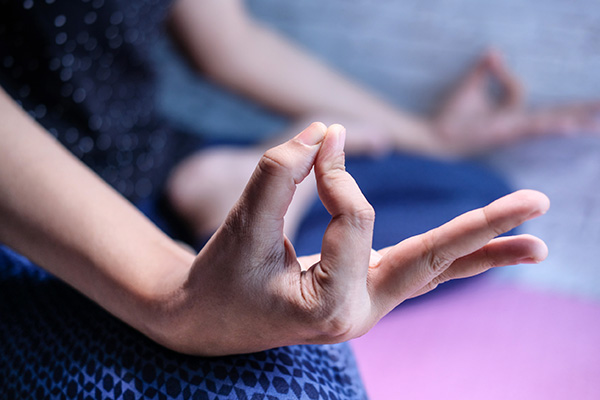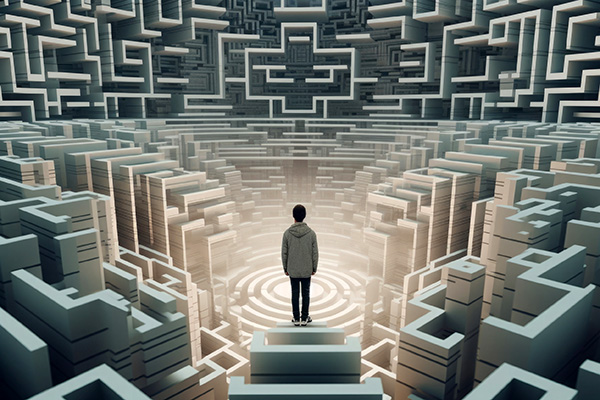hinduism
Heal Your Life With The Great Law
 Do you have a lot of recurring drama in your life and the same negative situations repeating again and again? Do you keep attracting the same kind of toxic people and energy thieves into your life?
Do you have a lot of recurring drama in your life and the same negative situations repeating again and again? Do you keep attracting the same kind of toxic people and energy thieves into your life?
If so, you may benefit from learning more about the laws of karma and how to apply them in your everyday life, as these universal laws can transform your life for the better if we honor them in our spiritual practice and daily life.
Hindu and Buddhist spirituality recognizes 12 Laws of Karma. The first and most important of these is The Great Law, also known as the Law of Cause and Effect. This fundamental karmic law has helped me a lot to uncomplicate my own life since my spiritual awakening.
The Great Law teaches that whatever we sow, we shall reap. Every cause has an effect. Whatever put out into the world will eventually come back to us. Even the good and bad things we wish upon others will return to bless, or curse us.
Once we understand the role of The Great Law in our life, we become more aware of how we can eliminate negative patterns in our life and begin to attract more positive, new things.
The energy we emanate each day in the form of thoughts, wishes, fears, desires, attitudes, and beliefs will determine what will return to us as manifested experiences, events and circumstances.
Intention is everything in karmic law. For example, you start dating someone, but you live in fear of that person leaving you, or betraying you, so you are emanating an energy frequency of fear. In the end, it is very likely that you will lose that person. Fear attracts fear, love attracts love, and gratitude attracts gratitude. It’s that simple.
The Spiritual Power Of The Words You Speak
 Have you ever stopped to truly consider the words you speak? Most of us talk all day, every day, without realizing the impact of each syllable we send out into the world.
Have you ever stopped to truly consider the words you speak? Most of us talk all day, every day, without realizing the impact of each syllable we send out into the world.
Words are much more than just communication sounds. They’re vibrations, frequencies, and intentions. Whether spoken softly, shouted out loud, or whispered quietly to yourself, every word carries mystical energy.
In many spiritual traditions, the spoken word is seen as a powerful metaphysical force or divine power. It is a force of creation and transformation.
From magical incantations to sacred ceremonies, words have long been used to shape everyday reality, influence the world and improve life.
The earliest recorded reference to the power of speech dates back to ancient Mesopotamia. In the city of Uruk, magical incantations were found carved onto clay tablets dating back to approximately the 5th century BCE. These spoken spells were used for protection, healing, and influencing others, revealing a deep understanding of the energetic and powerful nature of speech as early as 2,500 years ago.
Around the same time, the ancient Egyptians believed in the concept of heka, which is often translated today as “magic” but really means “divine creative power.” They believed the gods used heka to create the world, and that humans could access this same creative power through sacred words called hekau.
Tuning In To The Psychic Wisdom Of Animals
 Animals are remarkably attuned to our moods. They can sense the vibrations of our thoughts and emotions before we even speak. Their psychic sensitivity defies logic and reaches into the realm of the mystical.
Animals are remarkably attuned to our moods. They can sense the vibrations of our thoughts and emotions before we even speak. Their psychic sensitivity defies logic and reaches into the realm of the mystical.
I’ve always been aware that animals can see into our hearts and minds in ways we humans have long forgotten. There’s a quiet, knowing wisdom in their eyes. They show a depth of understanding that suggests they perceive far more than we realize.
People across many cultures and spiritual paths believe that animals come into our lives to teach, guide, and inspire us. They reflect our energy, test our patience, demonstrate unconditional love, and remind us to stay present.
When viewed this way, our connection with animals feels like a sacred soul agreement where both parties grow and learn together.
This concept is also found in spirit animal or totem traditions, which are part of many Indigenous and shamanic teachings.
In these practices, each animal represents a specific type of wisdom or lesson that aligns with something we need to learn. Observing how animals behave or taking note of which ones appear in our dreams can reveal messages intended just for us. These connections help us discover who we really are and remind us that we’re all connected.
In Buddhism, especially the Mahayana tradition, there is a belief that all living beings, including animals, are caught in the cycle of rebirth. This belief fosters deep compassion because any animal could have once been a loved one from a past life. Witnessing animal suffering can open our hearts even more. Animals also teach us how to be mindful. They live in the present moment without attachment or worry. By caring for them with kindness, we grow spiritually and let go of some of our ego.
How Mudras Connect Mind, Body and Soul
 Have you ever wondered why some people hold their fingers in unusual positions while meditating?
Have you ever wondered why some people hold their fingers in unusual positions while meditating?
These sacred hand gestures, known as mudras, are not just meant to “look cool” — they are a powerful energetic practice rooted in ancient spiritual traditions. They are intentional postures designed to channel energy, focus the mind, and deepen spiritual connection.
Mudras are an integral part of many spiritual lineages, most notably Kundalini Yoga – an energetic healing science that dates back thousands of years – as well as Hinduism, Buddhism, Jainism, classical Indian dance, and yogic disciplines.
Its origins can be traced back to the Vedas, the oldest sacred texts of Hinduism, where mudras were used in rituals to invoke divine blessings and spiritual power.
Over the centuries, these gestures have evolved into essential tools within yoga, tantra, and meditation practices. Their purpose: to help the practitioner direct subtle energies, sharpen awareness, and align with a higher consciousness.
In Sanskrit, mudra means “seal,” “sign,” or “gesture.” Far from mere physical postures, these gestures connect body, mind, and spirit, forming an energetic circuit that speaks directly to our auric field. Each mudra is a subtle energetic signal – each finger position resonating with specific astrological influences, emotional states, and elemental energies.
While some mudras involve the entire body, most are performed with the hands and fingers. Their effects are both profound and practical, enhancing spiritual practice, supporting healing, and facilitating the flow of life-force energy (prana or chi) through the body.
Ready For Your Spring Spiritual Renewal?
 Today marks the Spring Equinox and the first day of spring in the Northern Hemisphere. Known also as the Vernal Equinox, it is an astronomical event that marks one of the two times of the year when day and night are nearly equal in length. It usually occurs around March 20th or 21st in the Northern Hemisphere.
Today marks the Spring Equinox and the first day of spring in the Northern Hemisphere. Known also as the Vernal Equinox, it is an astronomical event that marks one of the two times of the year when day and night are nearly equal in length. It usually occurs around March 20th or 21st in the Northern Hemisphere.
During the equinox, the sun crosses the celestial equator and moves north. Many cultures and traditions celebrate it as a time of balance, renewal, and growth. As nature shifts into balance, we are invited to do the same — to clear away what no longer serves us and move into a season of light, action, and new beginnings.
Spring is a new beginning. A new sun rising. The dawn in the wheel of the year. At this time of year our minds are bright and alive with new ideas. Many of us feel inspired and excited to try new things. Life awakens in the warm sunlight and our spirits feel ready for a new beginning.
One of the longstanding customs associated with this time of year is the tradition of “spring cleaning.” Across cultures and generations, people have used this time of year to refresh their homes, clear out accumulated clutter, and invite new energy into their lives.
But spring cleaning is more than just cleaning up our physical space — it is a sacred ritual of renewal, release, and transformation. As the earth awakens from hibernation, we too are called to clear out the old and make room for new energy. From a spiritual perspective, this process is an opportunity to realign ourselves with higher frequencies, release stagnant energy, and invite clarity into our lives.
Did Your Soul Choose Your Life Challenges?
 “Oh, why do I have such terrible karma?” or “Why does the universe keep throwing me curveballs?” or “Is God punishing me?” These are questions that clients often ask me when they face struggles in life.
“Oh, why do I have such terrible karma?” or “Why does the universe keep throwing me curveballs?” or “Is God punishing me?” These are questions that clients often ask me when they face struggles in life.
Spirit has repeatedly shown me in many readings over the years that we all have a kind of “architect’s plan” that we design before we incarnate into this life. This soul plan for our life journey lays out the lessons we’re going to learn and the experiences we’re going to have.
This spiritual principle is known by various names (depending on the context or belief system), including our spiritual blueprint, life design, divine plan, life script, soul contract, predestined path, and so on.
I prefer “architect’s plan” because it reminds me of the careful, meticulous planning an architect does when designing a new structure, long before the practical, hands-on construction takes place on site.
Like architects, we calmly and clearly create a plan for our life journey before we incarnate. It is only when we are here in the physical world to embody our plan that we fully experience the intensity and the many dangers and pitfalls that are part of our chosen journey, including all the fear, love, pain, hardship, joy, suffering, and everything in between.
Yes, it is hard to believe that we actually choose to face challenges and difficulties in our lives. But various spiritual traditions and esoteric philosophies tell us that our soul’s path is predestined or planned before we’re born, or at least that we have certain free will choices and options along the way.
Embrace The Wisdom Of Your Inner Crone
 The archetypes of the Maiden, the Mother, and the Crone are central figures in various spiritual and mythological traditions, especially in Paganism and Wicca, where they represent the Triple Goddess. They symbolize the three primary phases of a woman’s life and the cycles of nature, and are associated with the phases of the moon — waxing, full, and waning.
The archetypes of the Maiden, the Mother, and the Crone are central figures in various spiritual and mythological traditions, especially in Paganism and Wicca, where they represent the Triple Goddess. They symbolize the three primary phases of a woman’s life and the cycles of nature, and are associated with the phases of the moon — waxing, full, and waning.
The Maiden is associated with the waxing moon, representing youth, new beginnings, potential, and innocence; the Mother aligns with the full moon, embodying creation, fertility, abundance, and maturity; and the Crone is associated with the waning moon, symbolizing wisdom, life experience, reflection, and endings that lead to new beginnings.
In Greek mythology, these archetypes are seen in the Moirai or Fates: Clotho (the spinner of the thread of life), Lachesis (the measurer), and Atropos (the cutter). Similarly, in Hinduism, the goddess Kali represents the transformative power of the Crone, who presides over destruction and rebirth. They remind us of the cyclical nature of existence and the interconnectedness of the stages of life.
Mary, the mother of Jesus, embodies the essence of the Crone within the Christian tradition. As Mater Dolorosa (Sorrowful Mother), she is revered as a figure of profound strength and resilience, having witnessed the suffering and death of her Son. Her wisdom, born of enduring immense grief and unwavering faith, serves as a beacon of strength and compassion for the faithful. She is seen as a compassionate and empathetic figure who understands human suffering and intercedes for believers with her love and wisdom.